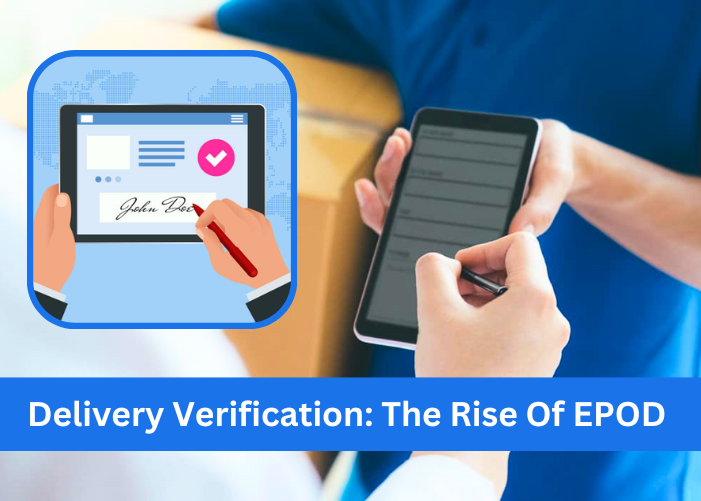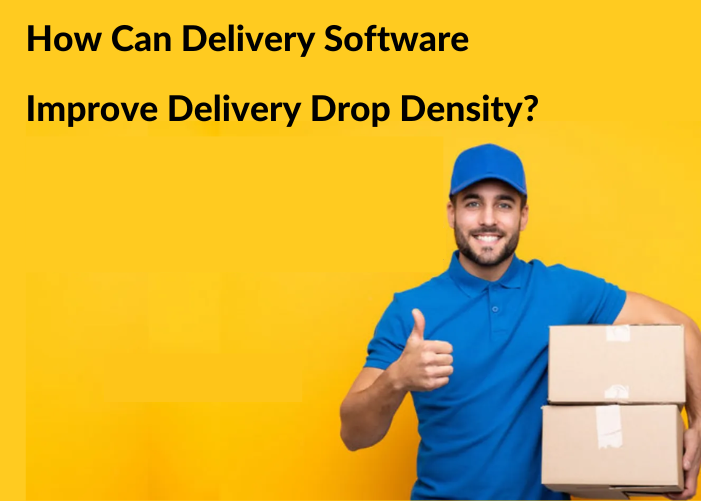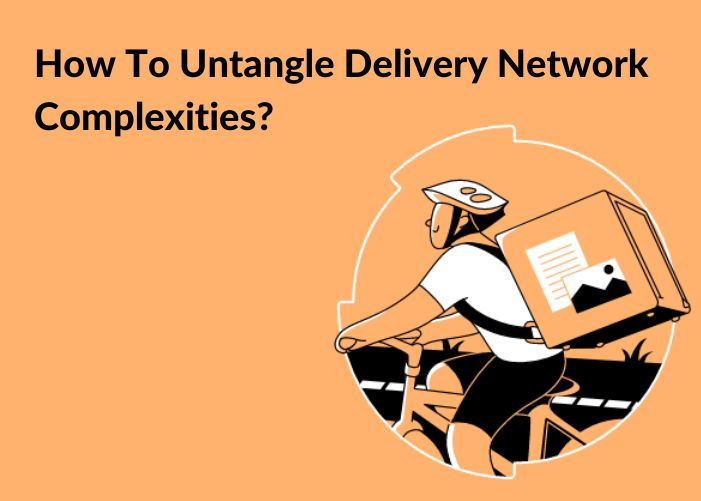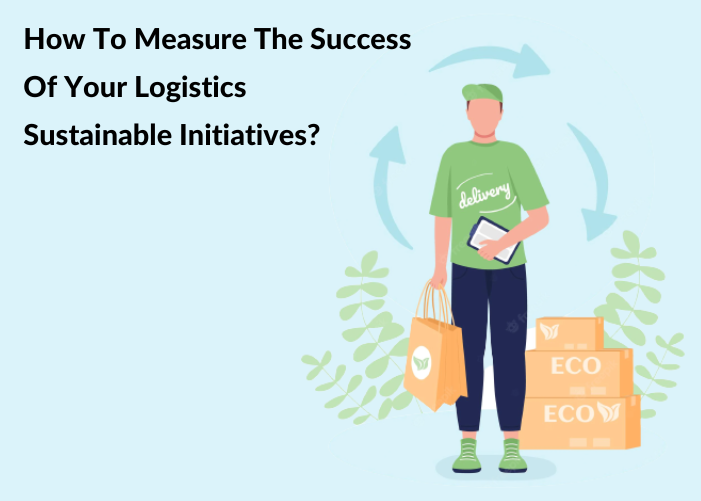What is electronic proof-of-delivery software? (ePOD)
As the name suggests, ePOD is an electronic method of collecting proof-of-delivery (POD).
Proof-of-delivery software helps you collect photo and signature POD data quickly and easily. Capturing signatures on tablets/smartphones using an electronic pen, scanning barcodes, and clicking pictures as proof are some popular methods of ePOD.
By using ePOD software, all such data points that are related to the delivery and confirmation of a parcel are recorded electronically – and, instantly – in a central location within a single system.
This helps in using the data as required e.g. for customers to view these photos online later. Importantly, you can maintain records, analyze performance, improve shortfalls, and maintain best practices.
2) Why are companies shifting to ePOD? What are its benefits?
We’ve all experienced frustration at how time-consuming and frustrating it is to maintain endless paper records! Easily lost or damaged, or how long it often takes to recover them when you need them – especially when there is an ongoing financial audit or an irate customer!
Well, the immediate benefits of an ePOD are well documented:
- Ease and accuracy of data-management
- Eliminates and reduced paperwork
- Improved Customer Satisfaction
However, we thought it would be worthwhile to shortlist 5 other benefits that don’t get mentioned as often:
i) Lesser customer disputes: Not only do customer disputes damage your company’s reputation, but they also consume important resources (e.g. customer service staff, accounts, delivery teams).
Equipped with an ePOD, your drivers can record POD data accurately. With such irrevocable evidence for every order, the customer has faith in the data, and the chances of tampering are negligible. As a result, it reduces the number of customer disputes.
For example, disputes are likely to arise when a customer isn’t present to accept his parcel. With ePOD however, drivers can take photos of items delivered or record details with a GPS time stamp.
ii) Efficient on-site transactions: ePOD helps maintain Operating Quality Control when the driver is at the customer’s doorstep.
Filling out paper forms is cumbersome for both, your driver and customer. Not only are they prone to error (which gives rise to disputes) but they also make your company appear dated.
Adopting modern electronic processes that tie into automated last-mile delivery software improves the quality of your delivery process (speed and quality of data collection), establishes best practices for on-site procedures that your drivers can follow, and lends a professional image to your brand.
The app can even prompt your drivers to enquire about value-added services (e.g. product installation, opening the packages) which in turn, improve your revenue and serve customers better.
iii) Processes become streamlined: A deeper benefit of ePOD is that it streamlines and quickens internal procedures.
Cumbersome and time-consuming processes like manual data entry are successfully circumvented. Data is recorded and received in real time as soon as the driver captures it with an ePOD tool.
The data is also transmitted automatically between systems, both internal and with those external stakeholders and vendors.
Order management, invoicing systems, sales projections, and pricing control are just some of the systems that can immediately receive this ePOD data and thereby, improve company productivity immensely.
iv) Real-time data: Extending the point above, an ePOD collects and transmits data in real time. Thus, processes that use this data for daily transactions can work faster. Some examples include:
- Checking POD data for correctness and matching it with orders
- Resolving customer disputes
- Raising invoices
- Rescheduling failed/replacement deliveries
v) Boosting staff productivity & increasing their bandwidth: Accessing and working with digital data is a boon for your workers, whether on-site, in warehouses, or at central locations.
To receive delivery data in real-time and work on it via advanced software and tools has sped up their work exponentially.
Electronic data collected on forms reduces errors and reduces back-and-forth calling between delivery agents and central staff. The same staff can complete more daily jobs, thereby improving the company’s top line.
vi) Helps your drivers: Importantly, we tend to forget how much an ePOD helps your delivery drivers! Your drivers work long hours, battle traffic and weather, and often encounter unsafe/difficult environments.
The app helps your drivers complete their tasks faster, and more efficiently and reduces errors. Knowing that they can follow the checklist at the delivery doorstep, or not have to worry about losing important delivery proof or documents gives them peace of mind.
3) Popular ePOD methods
Which ePOD is best for you? Well, just like all other solutions and strategies, various industries have different requirements. However, there are also several elements that run common across industries. Be sure to choose wisely!
Let us look at some pros and cons of some popular methods of eOD:
i) Signatures for confirmation: A customer signing upon receiving his package is an age-old practice. It remains one of the most popular methods of ePOD as well.
Here, the customer uses an electronic pen to sign on a tablet (or, smartphone). This eliminates paperwork, shortens the delivery procedure, and aids in data storage (as a digital data point).
A signature is also useful to identify the customer (person) to whom the package has been delivered. This is handy when it comes to proving/preventing fraud, when an item is restricted by age, or when a package must be delivered only to a specified person.
ii) Barcode Scan: An accurate and simple method of POD, firms often instruct their drivers to scan a parcel prior to tagging it as delivered. Barcode POD can also be successfully combined with geo-tagging/location.
iii) Photo POD: As the preference for “contactless delivery” has risen (which became mandatory during the pandemic), this method of POD has risen rapidly. Photo POD enables drivers to upload pictures of the delivery location and package. Customers value this increased assurance.
iv) Time stamps: Well, although a timestamp isn’t technically a POD method, it is often used. It is particularly popular in industries (e.g. the medical industry) where the time of delivery bears special significance.
Typically, most packages in the medical industry mandate that a timestamp is shown along with the receiver’s signature. Timestamp data is also useful to track the final delivery time and can help improve daily scheduling and routing.
Conclusion: Using ePOd consumes less of your consumer’s day while providing them with a satisfactory on-site delivery service. To achieve Customer Satisfaction, it is important to adopt all suitable modern technology, like automated last mile delivery software, that optimizes your delivery schedules.




